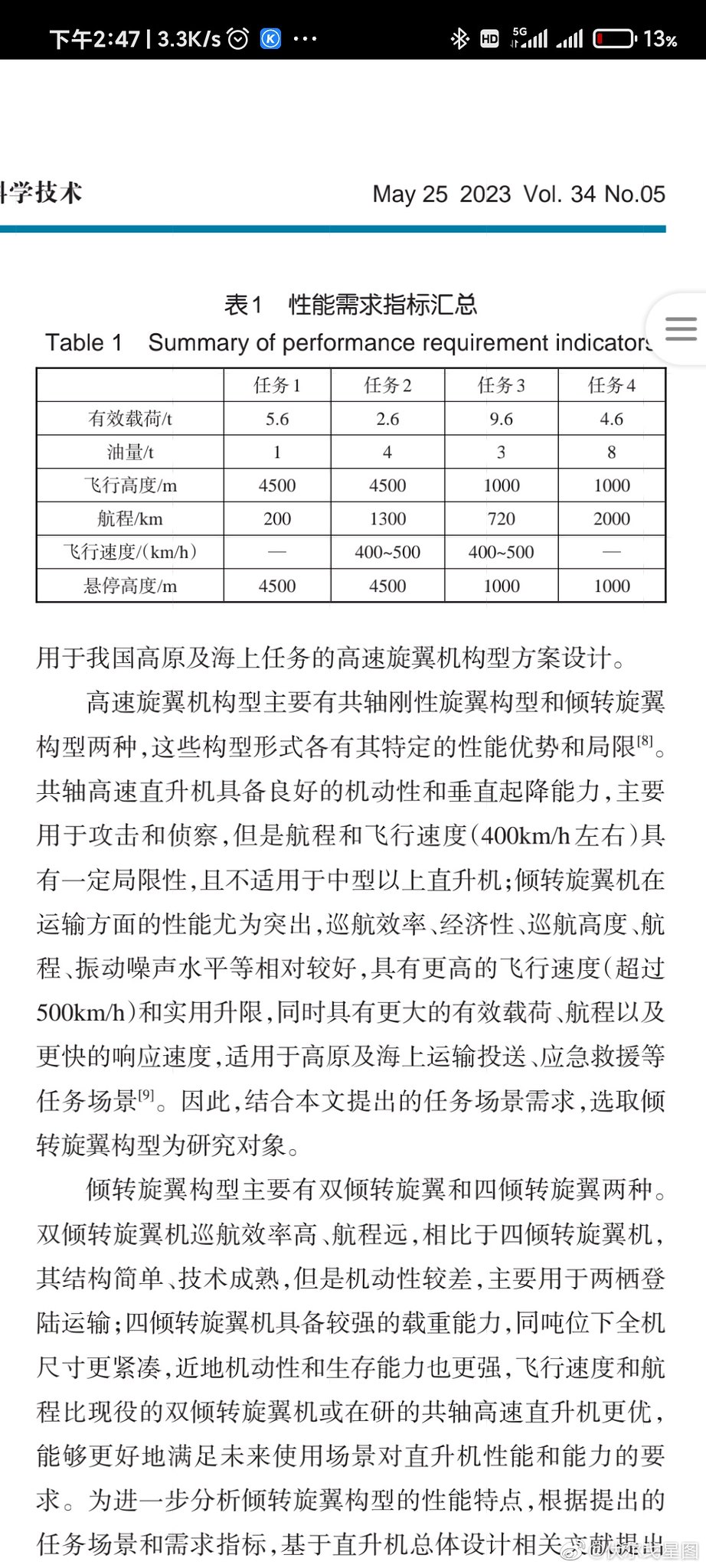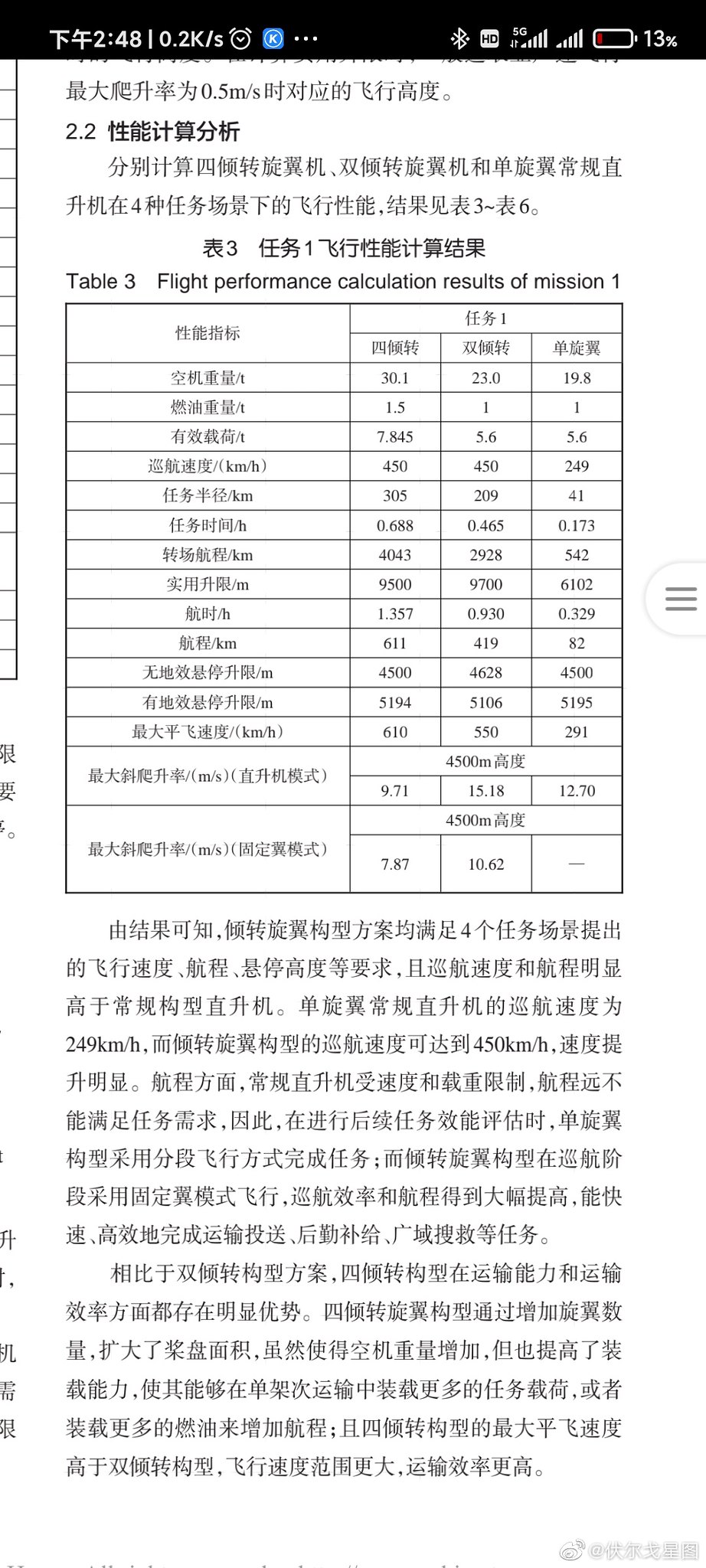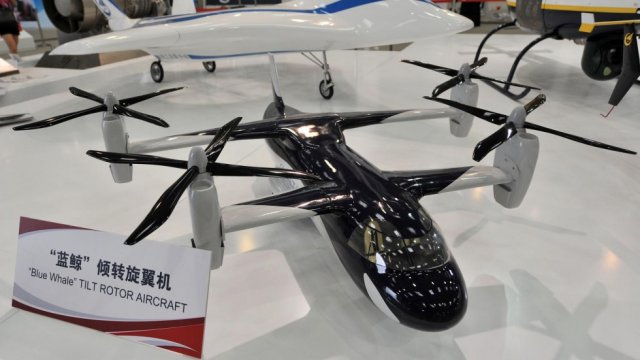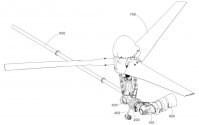You are using an out of date browser. It may not display this or other websites correctly.
You should upgrade or use an alternative browser.
You should upgrade or use an alternative browser.
Future High Speed Helicopter and next generation rotorcraft
- Thread starter Dishi
- Start date
asif iqbal
Banned Idiot
no dount China has now reached the technical know how to under take such a program
Chief designer of CAC, Yang Wei once said on CCTV- we are now in the free roam phase of weapon design. we can build whatever we want.no dount China has now reached the technical know how to under take such a program
by78
General
A study on a four-tilt-rotor design, which the paper deems superior to two-tilt-rotor configuration in terms of range, speed, carrying capacity and therefore more suitable for China's needs.
A paraphrase of the conclusion is below:
The high-speed rotarycraft proposed in this paper optimizes the combination of conventional helicopter and fixed-wing aircraft and achieves fast flight speeds, strong near-ground maneuverability, and other functional characteristics. The calculation results show that its speed and range have exceeded the fastest and farthest in active service, and the near-ground maneuverability has reached or even surpassed new concepts such as . The four-tilt rotor configuration has the advantages of fast speed, long range and strong maneuverability. It has obvious advantages in carrying out transportation, delivery, emergency rescue and other tasks in the plateau and maritime environment. It can be used in conjunction with other configurations of high-speed helicopters to form China's high-speed helicopter equipment system.
Could someone help me clarify the figures in table 3? I'm confused by the term "转场航程". Also the table seems to list figures for several different scenarios (within the same mission?), with a different set of range, mission radius, flight time for each.



A paraphrase of the conclusion is below:
The high-speed rotarycraft proposed in this paper optimizes the combination of conventional helicopter and fixed-wing aircraft and achieves fast flight speeds, strong near-ground maneuverability, and other functional characteristics. The calculation results show that its speed and range have exceeded the fastest and farthest in active service, and the near-ground maneuverability has reached or even surpassed new concepts such as . The four-tilt rotor configuration has the advantages of fast speed, long range and strong maneuverability. It has obvious advantages in carrying out transportation, delivery, emergency rescue and other tasks in the plateau and maritime environment. It can be used in conjunction with other configurations of high-speed helicopters to form China's high-speed helicopter equipment system.
Could someone help me clarify the figures in table 3? I'm confused by the term "转场航程". Also the table seems to list figures for several different scenarios (within the same mission?), with a different set of range, mission radius, flight time for each.



lcloo
Major
"转场航程" means range from one location (of operation) to another, the English term should be "Ferry range".
转场航程指飞机尽最大可能携带燃油后所能达到的最远航程,此时并不优先考虑其他有效载重的载重量。此种状态适用于飞机非作战远程转移。
Google translate:-
"Transit range" refers to the maximum range that an aircraft can reach after carrying fuel to the maximum extent possible, and no priority is given to the carrying capacity of other payloads. This state applies to the non-combat long-range transfer of aircraft.
转场航程指飞机尽最大可能携带燃油后所能达到的最远航程,此时并不优先考虑其他有效载重的载重量。此种状态适用于飞机非作战远程转移。
Google translate:-
"Transit range" refers to the maximum range that an aircraft can reach after carrying fuel to the maximum extent possible, and no priority is given to the carrying capacity of other payloads. This state applies to the non-combat long-range transfer of aircraft.
Last edited:
A study on a four-tilt-rotor design, which the paper deems superior to two-tilt-rotor configuration in terms of range, speed, carrying capacity and therefore more suitable for China's needs.
A paraphrase of the conclusion is below:
The high-speed rotarycraft proposed in this paper optimizes the combination of conventional helicopter and fixed-wing aircraft and achieves fast flight speeds, strong near-ground maneuverability, and other functional characteristics. The calculation results show that its speed and range have exceeded the fastest and farthest in active service, and the near-ground maneuverability has reached or even surpassed new concepts such as . The four-tilt rotor configuration has the advantages of fast speed, long range and strong maneuverability. It has obvious advantages in carrying out transportation, delivery, emergency rescue and other tasks in the plateau and maritime environment. It can be used in conjunction with other configurations of high-speed helicopters to form China's high-speed helicopter equipment system.
Could someone help me clarify the figures in table 3? I'm confused by the term "转场航程". Also the table seems to list figures for several different scenarios (within the same mission?), with a different set of range, mission radius, flight time for each.




Something this large would be strictly ground based right? In forward flight mode would the airstream from the forward rotors interfere with the rear?
Maybe? Because they can strategically place the rotors to minimize the interference.Something this large would be strictly ground based right? In forward flight mode would the airstream from the forward rotors interfere with the rear?
Oh well, I'll believe it when I see it flying
broadsword
Brigadier
Maybe? Because they can strategically place the rotors to minimize the interference.
Oh well, I'll believe it when I see it flying
The rear rotor blades' pitch can be angled higher.



